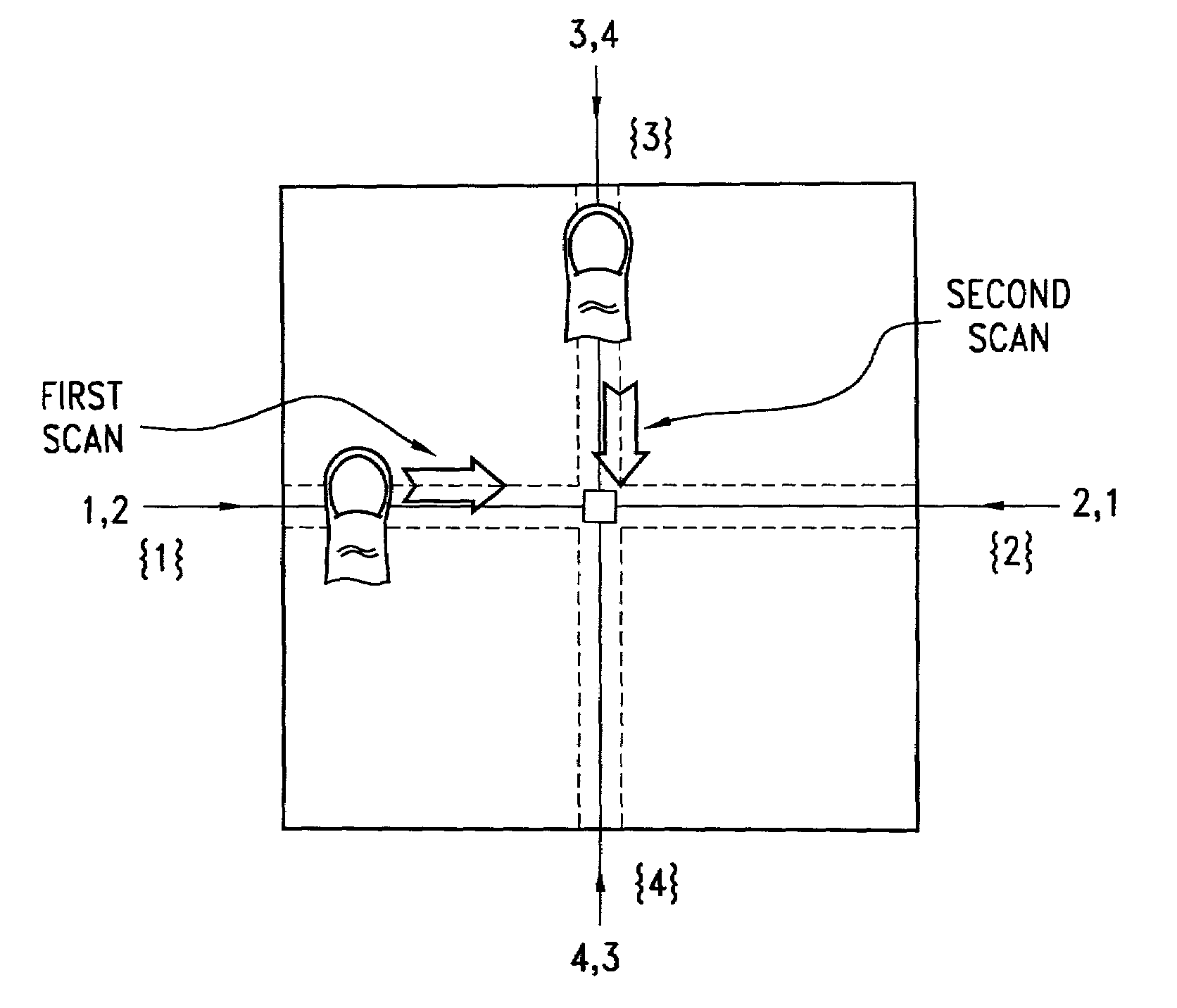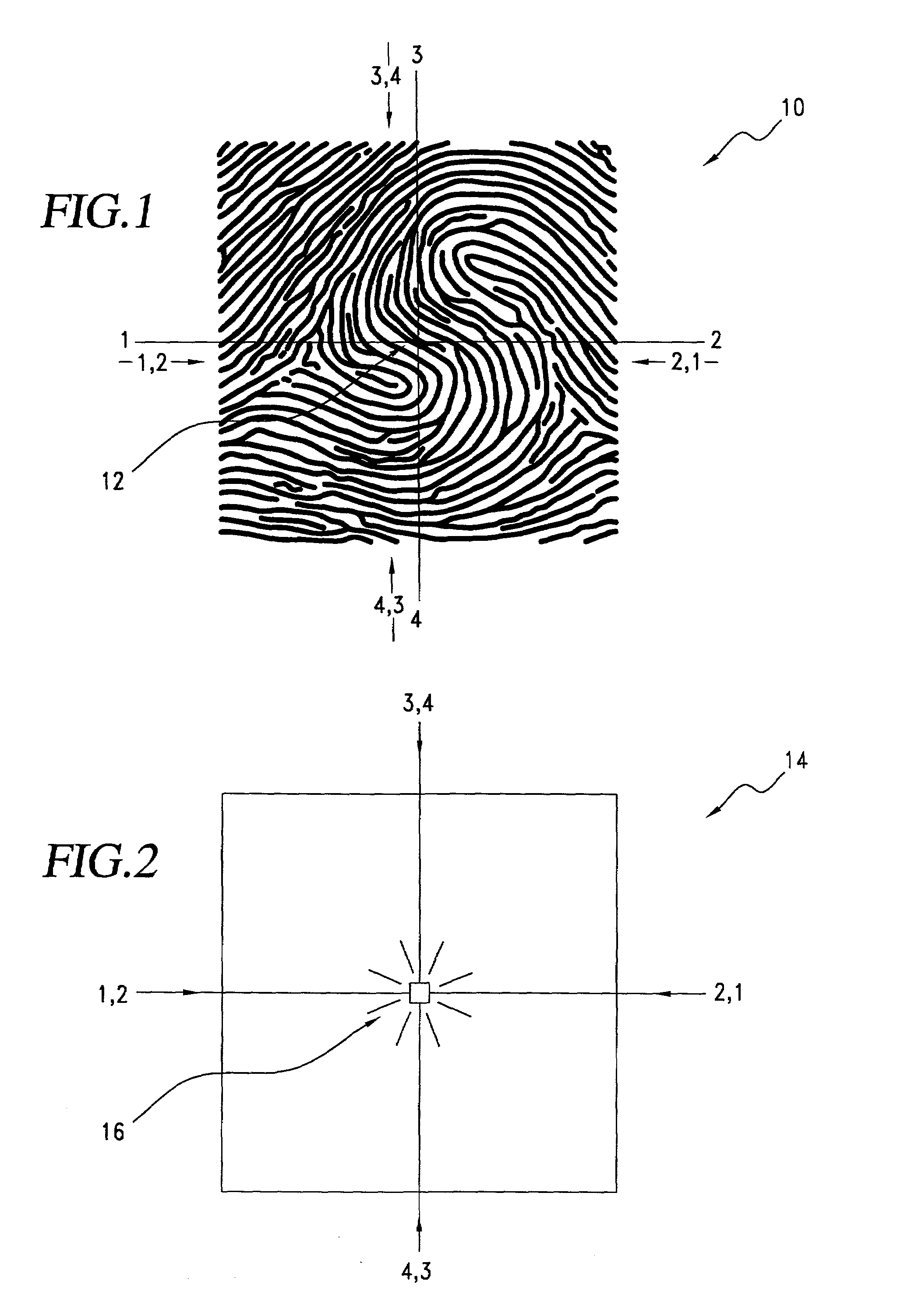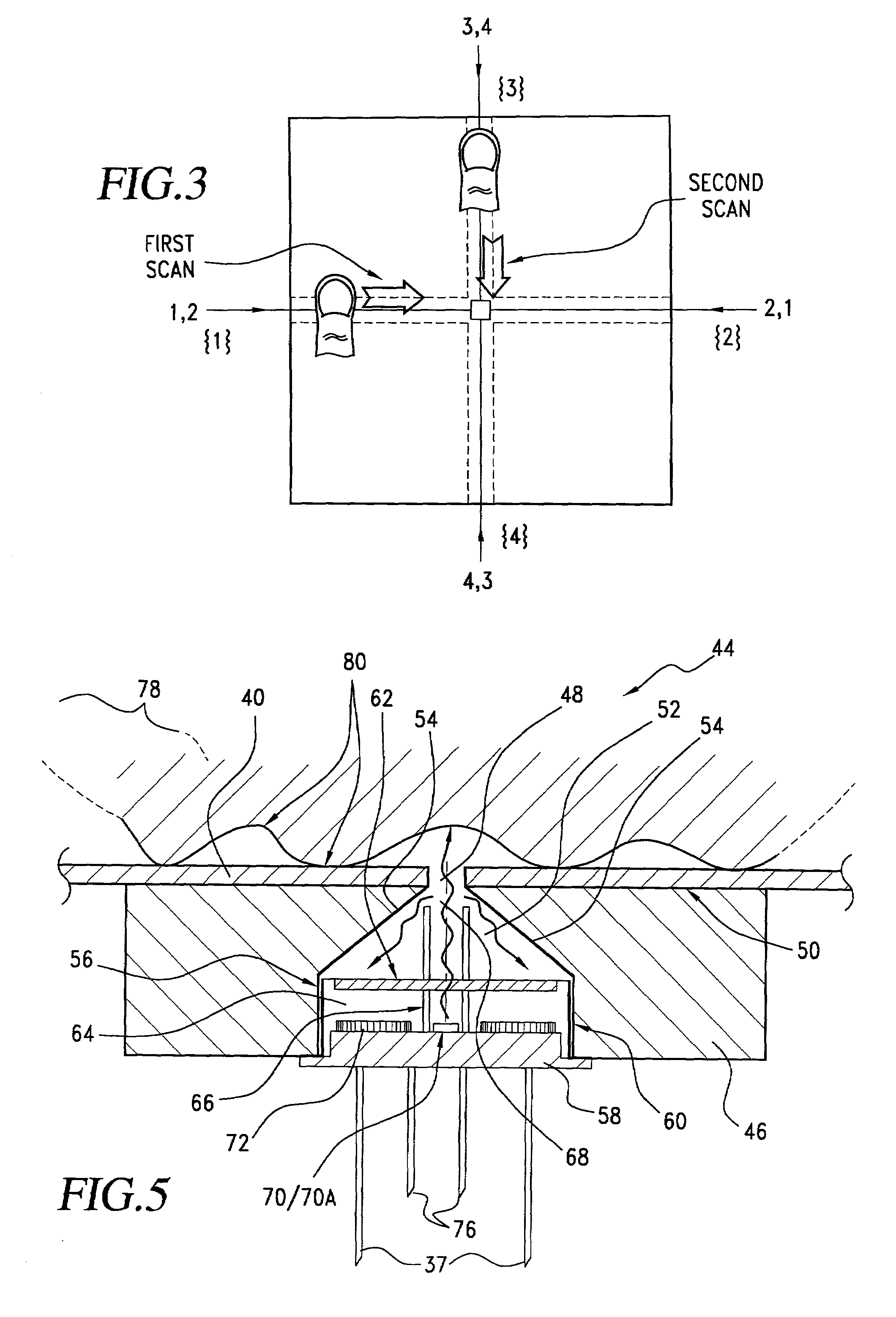Personal choice biometric signature
a biometric signature and personal choice technology, applied in the field of personal authentication, can solve the problems of increasing the complexity of the security of one's identity, the common victims of illegal falsification and duplication of identification instruments, and the deployment to date, so as to simplify the capture of pcbs, simplify processing, and minimize the spatial variation of a particular straight line segmen
- Summary
- Abstract
- Description
- Claims
- Application Information
AI Technical Summary
Benefits of technology
Problems solved by technology
Method used
Image
Examples
Embodiment Construction
[0059]Instead of using the entire inked impression of fingerprints and their associated characteristic keys for identification purposes, a preferred embodiment of the current invention employs a total of four straight-line segments (linear signatures) all crossing the nominal “reference” center of the fingerprint being processed. Referring to FIG. 1 there is shown a typical fingerprint central portion 10 over which are superimposed two straight lines which intersect at their midpoints to produce what are defined as four linear signature paths.
[0060]A horizontal line 1-2 running form West to East shows the path for taking a linear signature designated as 1,2 as depicted by arrows 1,2 (e.g. the path which originates at the western terminus 1 of the line 1-2 and ends at its eastern terminus 2). The same horizontal line 1-2 shows the path for taking a linear signature designated as 2,1 as depicted by arrow 2,1. Clearly, this second linear signature 2,1 will produce the same fingerprint ...
PUM
 Login to View More
Login to View More Abstract
Description
Claims
Application Information
 Login to View More
Login to View More - R&D
- Intellectual Property
- Life Sciences
- Materials
- Tech Scout
- Unparalleled Data Quality
- Higher Quality Content
- 60% Fewer Hallucinations
Browse by: Latest US Patents, China's latest patents, Technical Efficacy Thesaurus, Application Domain, Technology Topic, Popular Technical Reports.
© 2025 PatSnap. All rights reserved.Legal|Privacy policy|Modern Slavery Act Transparency Statement|Sitemap|About US| Contact US: help@patsnap.com



